The first Census took place in Great Britain during 1841 and included St Nicholas (later Drake’s) Island. They have continued every 10 years since usually on 31 March although there was an additional 1939 register in response to the Second World War. Although originally part of Cornwall, the Island was not part of the lands rented by Plymouth when it was incorporated in 1440, by the time of the Census it was officially part of St Andrew’s Parish in Plymouth. The interesting part of the Census is looking at the ages, families and origins of the Garrison which give an idea of the military community on the Island at the time. In general if an Infantry detachment was on the Island it would be drawn from a Regiment which would be based at one of a number of locations within the Plymouth Defences. They would usually be on Garrison duties within Plymouth whilst waiting for deployment overseas in the Empire or having come back from abroad waiting to be redeployed within the UK. The Regiment may also rotate the Island detachment whilst it had responsibility for providing the Garrison Infantry. The Gunners would generally be a detachment from the Regiment at the Citadel. The Gunners were reorganised a number of times during the period but again the Artillery Regiments would often rotate in and out of Plymouth so there would be a regular turnover of personnel forming the Garrison on the Island. The Master Gunner and any Invalid Gunners to assist him were part of the regular Army but held on a separate strength from the Royal Artillery units. The Royal Engineers were rarely part of the permanent Island Garrison except during wartime but would visit the Island to carry inspections, maintenance or repairs. The Army also underwent a number of reforms over the period. The Cardwell and Childers reforms in 1874 and 1881 changed the terms of service and reorganised the Regimental system. In 1855 the Board of Ordnance was replaced by the War Office but there was no supply service until the formation of the Army Ordnance Corps, later the Royal Army Ordnance Corps in 1894 when the Army bought and supplied its units and Garrisons centrally. Prior to that tenders were put out to civilian companies to supply the Army. What I’m looking at over the next few weeks are the censuses up until 1911 apart from 1861 which I can’t locate although it could be the Garrison was included as part of the parent unit back in Plymouth. The 1921 census is due out soon as well so I’ll probably be able to manage one census every two or three weeks. I appreciate a lot of people reading the blog will have a link to Plymouth so I will publish the full census so people can look for potential ancestors that may have been on the Island especially as a number of soldiers or their children stayed in the Plymouth area after they retired.
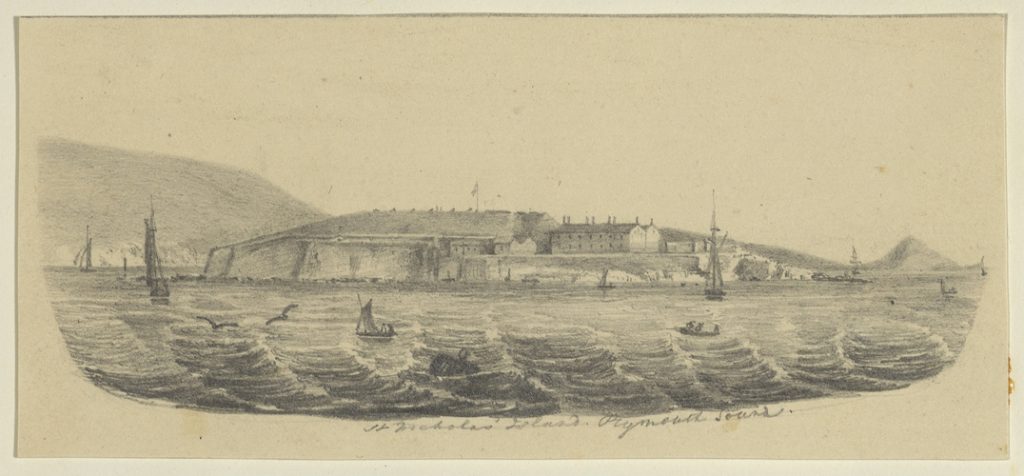
The 1841 census just listed the individuals and recorded whether they were male or female, their profession, their age, if they were born in the same county (just Y or N) and which country they were born in. Later censuses would add more detail regarding birthplace. The first UK census for the Island showed a detachment of the 53rd (Shropshire) Regiment of Foot commanded by Lt John Allez were on the Island. Under his command were 1 Sgt, 1 Cpl and 21 Privates. The other military personnel were the Master Gunner, Thomas Cowser assisted by an Invalid Gunner William Bangham. The Master Gunner was an appointment outside of the Regular Artillery. Master Gunners were discharged from the Regular Artillery after at least 16 years service and immediately appointed Master Gunner which held Warrant Officer rank. They were still part of the Army but just another historical quirk of the way the Army managed ranks and appointments that they were not part of regular units but the Master Gunner of a location where he was responsible for gun maintenance and preparation as well as the safe storage and supply of ammunition. During peace time they would also fire the guns for Royal and other Salutes as well as the distress gun. To assist them they had an Invalid Gunner, usually a wounded soldier no longer fit for the battlefield but capable of garrison duties. During wartime regular or territorial Gunner units would be allocated to man the guns. In total 26 military personnel made up the Island Garrison. Both the Gunners were married and accompanied by their families. Children were considered scholars from the age of 5 to 13 if they went to school. The Church of England sponsored some schools and the Government did provide some money but schooling was not universal nor necessarily free. The UK’s first Education Act wasn’t passed until 1870 when 50% of children still didn’t have any schooling. The Cowser family were also accompanied by their daughters Hannah aged 25 and 20 year old Mary. The Bangham Family had no children living with them. Six soldiers of the 53rd were accompanied by their families. Sgt Hodgkins with his wife Alice, 2 sons and 1 daughter. Cpl Scott with his wife Mary, Pte Hillier, his wife Sarah and their 3 daughters, Pte Garvey with his wife Mary son and 2 daughters, Pte O’Byrne with his wife Mary son and daughter and lastly Pte Cox with his wife Miriam and their daughter. Additionally Elizabeth Sharpe aged 20 and her 10 year old sister were living on the Island but it isn’t clear what household they are part of. Possibly the father and mother were away for the night of the census and would have been recorded elsewhere. The lessee of the Canteen Samuel Law also lived on the Island with his son George, Jane Cushion and Ann Johnson. Samuel had been the lessee of the Canteen since at least 1818. It’s not clear if the two females were workers or relatives or possibly even both. Also living with Samuel were his daughter Matilda Mahon and her daughter another Matilda. Matilda (the Elder) had married in 1818 to George Mahon, the Master Gunner on the Island at the time. Samuel was a witness at the wedding. It’s unclear if the Matilda’s were waiting to move after George had been posted or were now living permanently with Samuel, perhaps George had died. So in total there were 10 families on the Island counting the Sharpe’s as a family. 14 children under 14, 5 boys and 7 girls but there were older dependents. Of all ages there were 32 males of which there were 26 serving soldiers and 24 females so 56 in total. The garrison was mainly Infantry with 2 Gunners from the Royal Artillery. The 53rd were in Plymouth until they sailed for India in 1844. They later became the King’s Shropshire Light Infantry in turn the Light Infantry, Royal Green Jackets and currently the Rifles.

Listed below are the names on the census
Lt John H Allez, 35 years old born in Jersey
Sergeant Bentley Hodgkins, 38, English
Alice Hodgkins, 36, English – Bentley’s wife
Elizabeth Hodgkins, 14, English – daughter
George Hodgkins, 12, English – son
Alfred Hodgkins, 8, English – son
Corporal James Scott, 40, English
Mary Scott, 40. English – James’s wife
Private Thomas Hillier, 35, English
Sarah Hillier, 35, English – Thomas’s wife
Jane Hillier, 10, English – daughter
Eliza Hillier, 5, English – daughter
Francis Hillier, 2 English – daughter
Private Andrew Garvey, 35, Jersey
Mary Garvey, 30, Jersey – Andrew’s wife
Catherine Garvey, 15, Jersey – daughter
Mary Garvey, 5, Jersey – daughter
Edward Garvey, 3, Jersey – son
Private William O’Byrne, 35, Irish
Mary Ann O’Byrne, 30, Irish – William’s wife
William O’Byrne, 10, Irish – son
Mary Ann O’Byrne, 1, Irish – daughter
Private Richard Cox, 35, English born in Devon
Miriam Cox, 30, English – Richard’s wife
Elinor Cox, 2, English born in Devon – daughter
Elizabeth Sharpe, 20, English
Esther Sharpe, 10, English
Private John Arthur, 20, English
Private David Bartlett, 40, English
Private Silas Burnett, 35, English
Private John Ensor, 35, English
Private William J Green, 20, English
Private John Gould, 35, English
Private John Gibbs, 35, English
Private Joseph Harvey, 35, English
Private Bryan Kelly, 30, Irish
Private Dennis McAuliffe, 40, Jersey
Private James Murphy, 40, Jersey
Private William Player, 40, English
Private Thomas Purslow, 30, English
Private William Rabbits, 40, English
Private Joseph Rowley, 40, English
Private Samuel Smith, 35, English
Private Thomas Smith, 35, English
Master Gunner Thomas Cowser, 63, English
Elizabeth Cowser, 54, English – Thomas’s wife
Hannah Cowser, 25, English – daughter
Mary Cowser, 20, English – daughter
Gunner William Bangham, 43, English (Invalid Gunner)
Elizabeth Bangham, 33, English born in Devon – William’s wife
Samuel Law, 75, Jersey, Lessee of the Canteen
Jane Cushin, 50, English
Ann Johnson, 40, English
Matilda Mahon 45, English
Matilda Elizabeth Jane Mahon 18, English born in Plymouth Devon.
George Law 11, English
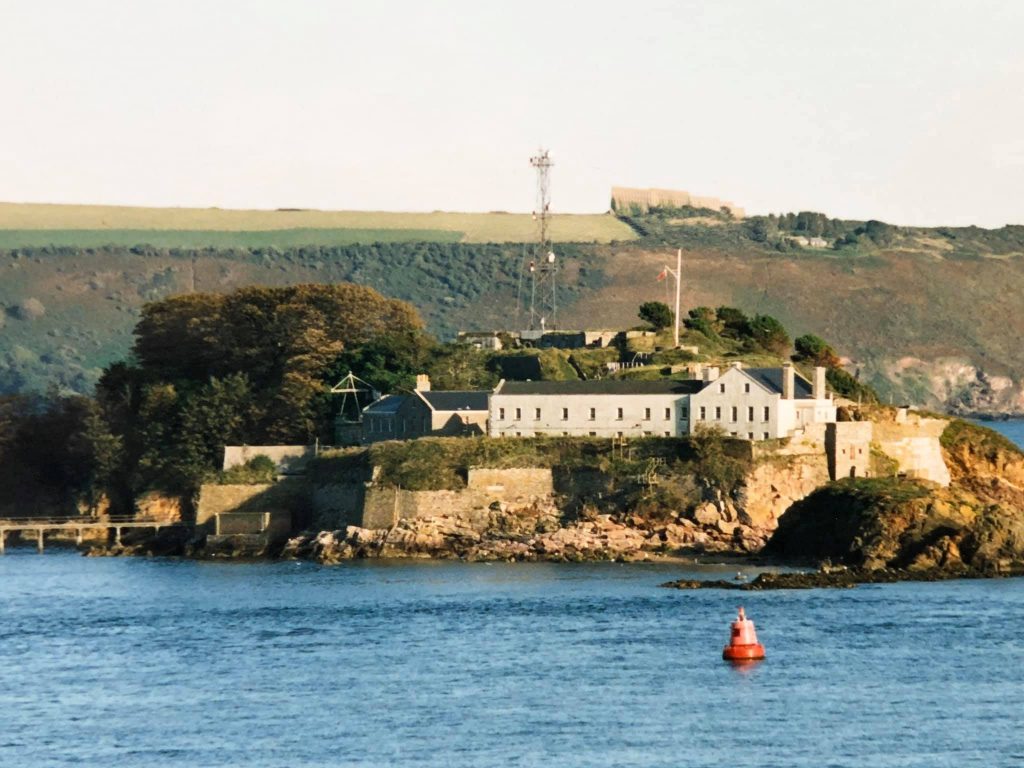
Although it was a Shropshire Regiment they recruited from all over including Ireland. Richard Cox was a Devonian and one of the wives, Elizabeth Bangham was also born in Devon. The Officer, Lt Allez was from Jersey and had served 16 years at the time of the census.
The Master Gunner, Thomas Cowser hailed from St Bees in Cumberland and was a weaver by trade before enlisting in the Royal Artillery in 1799 aged 21. He retired at Plymouth having been found unfit for further service by a medical board in 1847 aged 69. During his time he had served during the Napoleonic Wars and in the War of 1812 against America. He decided to remain in Plymouth living in East Stonehouse but unfortunately died a few months later. His Army record states he also had a son but he died whilst serving also with the Royal Artillery. The 1851 census shows Hannah and Mary his daughters stayed in Devonport and were living together in Cumberland street working as Milners and Haberdashers.
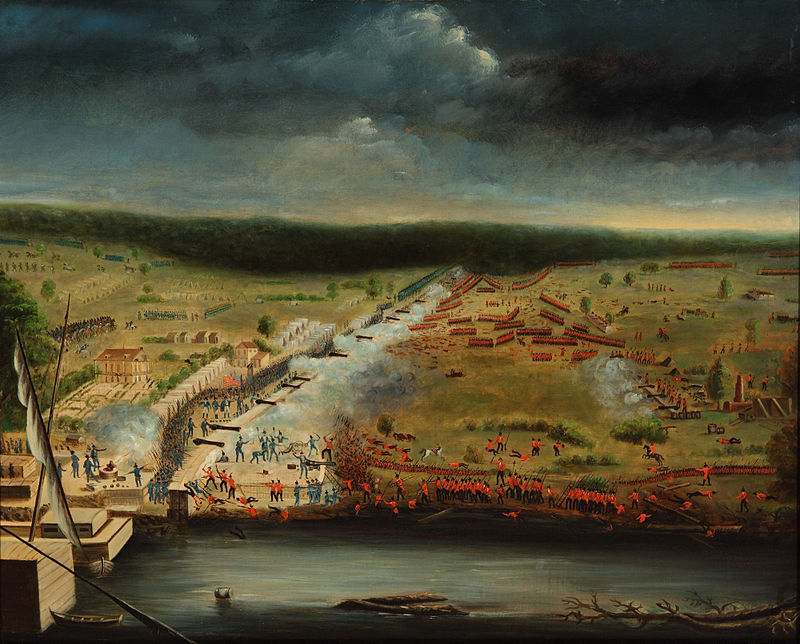
Cpl James Scott, from Buckingham, served for 21 years with the 53rd enlisting in 1823 serving abroad in Gibraltar, Malta and the Ionian Islands as well as at home. He had a mixed career. Promoted to Corporal in 1826 and Sergeant in 1830 he was reduced to Private after only 18 days as a Sergeant before being promoted to Corporal again in 1839 until discharged in 1845. His record doesn’t show what his offence was but it wasn’t uncommon for soldiers to bounce between ranks at the time.
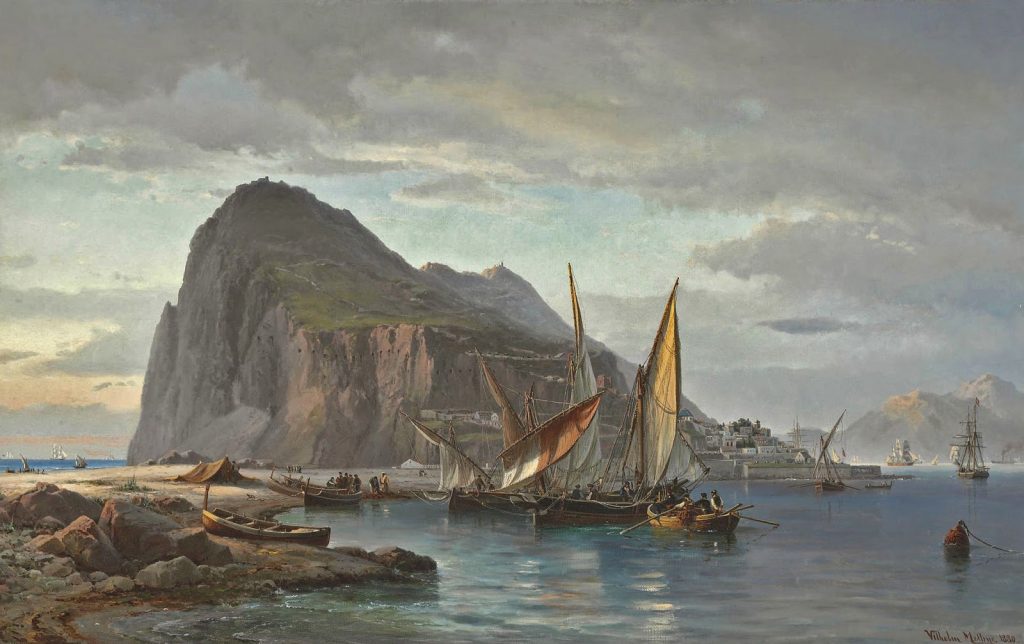
Private Richard Cox enlisted in 1824 and was discharged as medically unfit in 1844. A number of the 53rd were discharged around then. The Regiment was deploying to India so I am not sure if these were mandatory medicals prior to deployment or whether the individuals went sick and were subsequently discharged. Virtually all the medical reasons were given as pulmonary or breathing issues. Either way a number of those who had been on the Island were discharged as medically unfit and didn’t deploy to India. His pension record shows him living off his pension with his wife and daughter in Exeter in 1851. They do have a lodger staying with them to help with the bills.
Private Silas Burnett was a Somerset lad who enlisted aged 18 in 1823 and was discharged as medically unfit in 1845. Silas served abroad for 10 years in Gibraltar, Malta and the Ionian Islands. He deserted once in 1826 for a few months. It was not an unusual occurrence, before the Army reforms of the 1870’s around 10% of the Army were absent and on the run or trot as it was commonly known at any one time.
Private William Player was from Essex and enlisted in 1823. He had 20 years reckonable service – time spent in military jail didn’t count – by the time he was discharged as unfit for service in 1844. He spent just over 10 years abroad in Gibraltar, Malta and the Ionian Islands. He was promoted to Sergeant by 1825 but was allowed to resign his rank without trial around a year later. His record doesn’t show what he was accused of doing, he then remained a Private until discharge. William passed away in 1847 not long after he was discharged aged 46 whilst living in the East End of London.
Of the rest of the 53rd for some there are only snippets of information and others none. Sergeant Bentley Hodgkins was pensioned in 1845, just after the Regiment left for India which may have been the reason if he asked to be discharged. He was still in receipt of a pension in 1865 and was living in Jersey. Private Thomas Purslow was still serving in 1861 back in Plymouth at Devonport and still a Private. He was pensioned in 1864 and moved back to Shrewsbury. Private Andrew Garvey was pensioned in 1847 and was living in Birmingham until he passed away in 1853. Private William O’Byrne was also pensioned in 1846 and moved to Belfast. By 1865 he was living in Dublin until he passed in 1873. His son William followed him into the Army enlisting in the same Regiment, the 53rd as Drummer, Fifer and Bugler which possibly means he was a boy soldier to start with. Army records show that he was in Rawalpindi, India with the 53rd when he would have been 20 years old. Private John Arthur who served with the elder William O’Byrne was still a Private with the Regiment in 1851 and now serving alongside William’s son in Rawalpindi. Private David Bartlett was another pensioned in 1846, he moved to Southampton. Private John Gould was pensioned in 1846 after 18 years service and didn’t deploy to India. He was living in Salisbury immediately after his discharge. 1846 also saw Private Bryan Kelly pensioned. He moved to Sligo in Ireland and was still there until at least 1865.
William Bangham, the invalid Gunner was pensioned in 1849 and still living with his wife Elizabeth in Stoke Damerel, Plymouth in 1861 aged 63.


Samuel Law was the Civilian Canteen Lessee. The contract for managing the canteen would come up and be advertised in the Western Morning News and other papers at least every 3 years. Samuel and his extended family would have been under military law and subject to military discipline. Prices were controlled centrally for some items and the canteen would have served as a shop, café and bar for the Garrison and their families. The Canteen at this time was in what is known as the Governors House but was moved to the top of the Ablution Block once it was complete in 1846. Military Standing Orders allowed the Canteen Manager to keep a cow on the Island if he so wished and was allowed to use the Island boat. As Lessee it was Samuel’s responsibility to apply for any licences required. To get the Lease Mr Law would have to pay the rent on the Canteen building as a dwelling, on St Nicholas Island that was £10 per annum (around £1,200 today) and bid a further rent per every 10 soldiers on the Island as shown in the monthly Barrack return. In return he would be able to run the Canteen and its associated shop on the Island to turn a profit. It was sealed bid process with all applicants submitting their tender to the local Board of Ordnance Office.
There is a bit of a complicated story with Samuel and his extended family. Jane Cushin and Ann Johnson, may have been workers for Samuel or relatives or both but as 1841 was the first census it is difficult to find out if they were connected to Samuel previously and I can’t find them in a later census. However Samuel had been running the Canteen since at least 1818 when he was shown as the lessee as a witness at the wedding of his daughter Matilda, to the then Master Gunner George Mahon on the Island. George was appointed Master Gunner in 1806 and first married Dorothy Bottruls in 1809 but was widowed and remarried Matilda in 1818 aged 57. At the time Matilda was 22 and she is the elder Matilda Mahon on the census. They had a daughter, Matilda Elizabeth Jane Mahon born in 1821 and she is the other Matilda on the Census. George and Matilda had a son George Samuel Law Mahon in 1824 but he unfortunately passed away aged 2 in 1826. They had another son and again called him George Samuel Law Mahon In 1827, he also unfortunately passed away at a young age in 1840 aged 13. I’m not sure when Master Gunner George Mahon died but a reasonable guess would be in post sometime between 1827, when he was definitely in post and 1840 when he wasn’t. In the 1851 census Matilda (the Elder) is shown as a widow living with her brother Edward Law also a widower and his daughter Eliza in Plymouth. Matilda Elizabeth (the younger) married in 1842 to Joseph Hands in Plymouth. This brings us on to George Law aged 11 on the census. On the 6th December there was a strong gale in the Sound and George Law, Samuel’s son recently retired from the Navy whose last ship was HMS Ariadne, was trying to save the cargoes of some of the ships wrecked by the gale but was washed away and drowned. George was 33 at the time and his body was washed up near Withy Hedge on 26th December. The brigs Charity which had been coming from Newfoundland carrying oil and skins and the Emulous from Liverpool carrying salt were wrecked on the Island with most of the cargoes lost. George’s was Ann Eliza and it may have been the arrival of baby George that was the catalyst for George senior leaving the Navy. Anyway George’s family who were on their way from Yarmouth were unlikely to have been aware of George’s death until they arrived. The George Law in the census would have been the elder George’s son so Samuel’s grandson. I am not sure what happened to George’s wife Ann, I couldn’t find any reference to her in the records. Intriguingly in 1833 a James Law, once of St Nicholas Island and a Brewer was declared bankrupt in the local newspapers. I would guess there is a connection with the Law family, perhaps Samuel’s brother or son but I can’ find any record to confirm it. Certainly Samuel was the canteen lessee at the time.
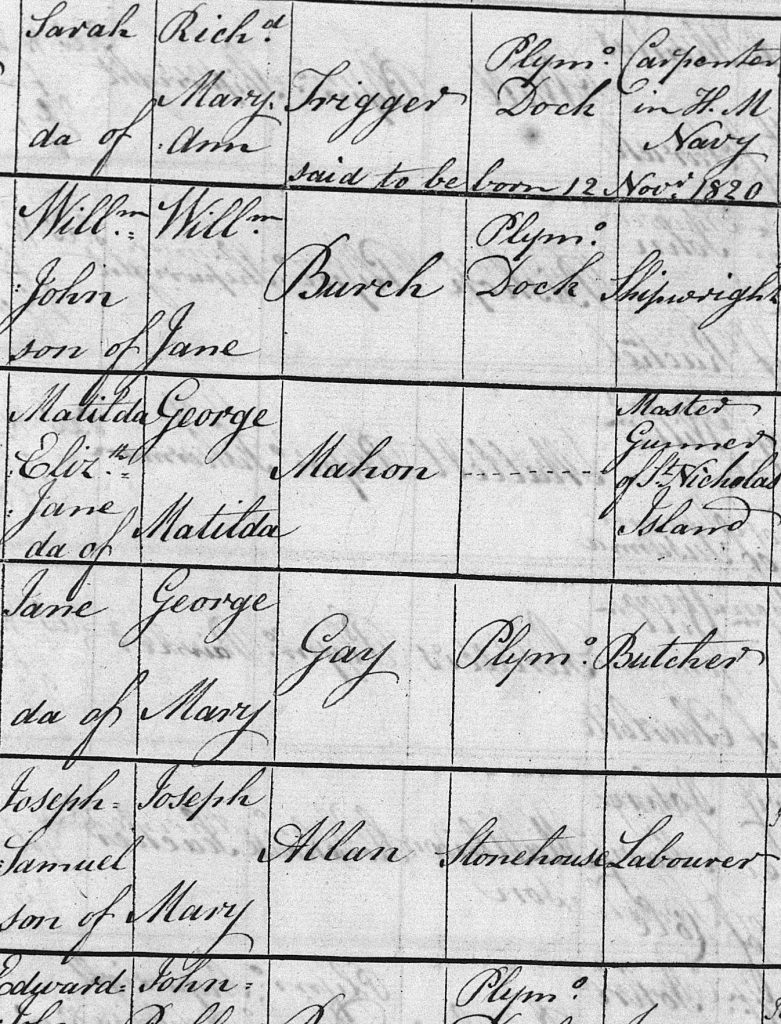
So that is a snapshot of the soldiers and their families that were on the Island on 31st March 1841 during the UK’s first census. I think it provides an interesting insight to the ordinary folk of the time and I hope you have enjoyed reading about it. I have all the census records for the Island through to 1911 apart from 1861. Over the next few weeks and months (some will take longer to research than others) I’ll share their details.

